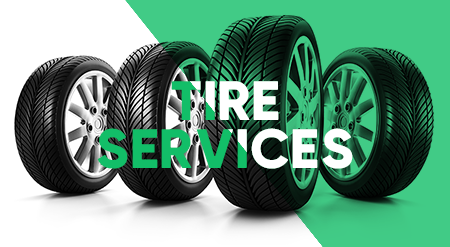Commercial Tire Services
Tire Rotation
What is a tire rotation?
Your tire’s tread slowly diminishes each mile traveled. The weight differential placed on the front & rear axles causes uneven wear & tear. To ensure even wear, it is highly recommended to rotate your tires periodically. Not only is it common practice, but this will help extend your tire’s life span.
How often should I rotate my tires?
When considering a tire rotation, you should always refer to your owner’s manual. Generally, it is ideal to rotate your tires during each oil change or every 6,000 to 8,000 miles.
Tire Balance & Alignment
What is a tire balance & alignment?
These two terms often become intertwined, but there is a clear difference. Damages or imperfections on a tire or rim can throw your vehicle out of balance. Identifying where to evenly distribute that weight is called a tire balance. Adjusting the angles of a tire so they are parallel to one another & perpendicular to the ground refers to an tire alignment. Properly balancing & aligning your tires increases fuel efficiency.
When should I balance & align my tires?
Knowing when to balance your tires can be simple. If you notice a slight to moderate wobble while driving, you may need a tire balance. Identifying if you need an alignment may require a little more work. Signs pointing to an alignment include:
- Vehicle pulls to the right or left
- Uneven wear on tread
- Steering wheel is skewed when driving straight
- Steering wheel vibration
Also, be sure to balance & align new tires when having them installed.
Tire Pressure
You should always check your tire pressure once a month. Tires commonly loose pressure in the colder months. Under inflated tires will cause your vehicle to work harder on the road, thus burning through more fuel. Proper tire pressure saves gas & money.
Do you know the appropriate pressure for your tires?
If not, that’s okay. Check with your vehicle owner’s manual.
Extend the Life of Your Tires
Getting the most out of your tires is simple. Just follow the guidelines below:
- Proper tire pressure, routine tire rotations, alignment & balance
- Avoid potholes, sharp objects, obstacles in road, curbs & speed-bumps
- Wreck less driving: sudden stops, driving on poorly maintained roads, speeding, quick jerking movements & emergency braking
- Using the correct tire for the current season



